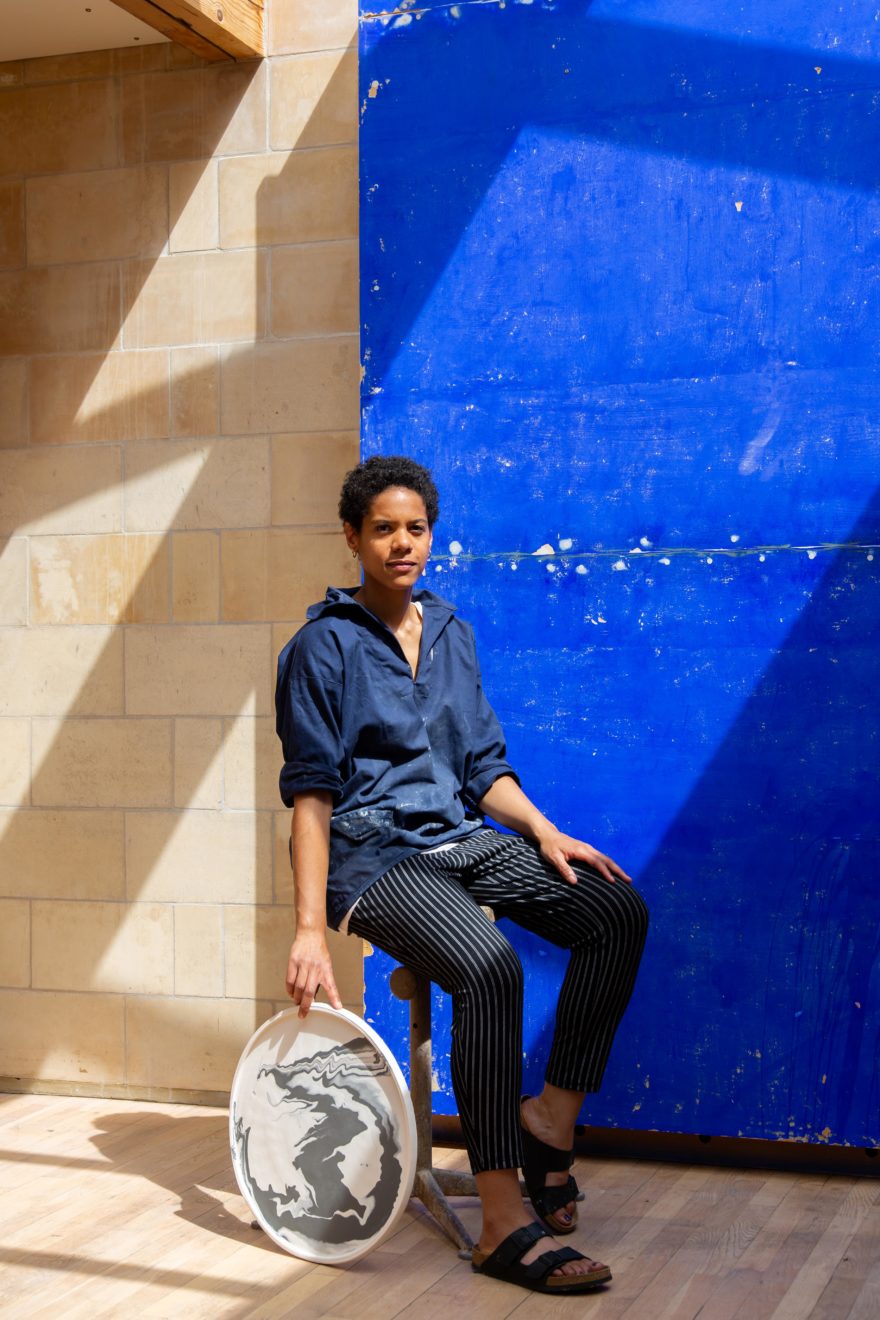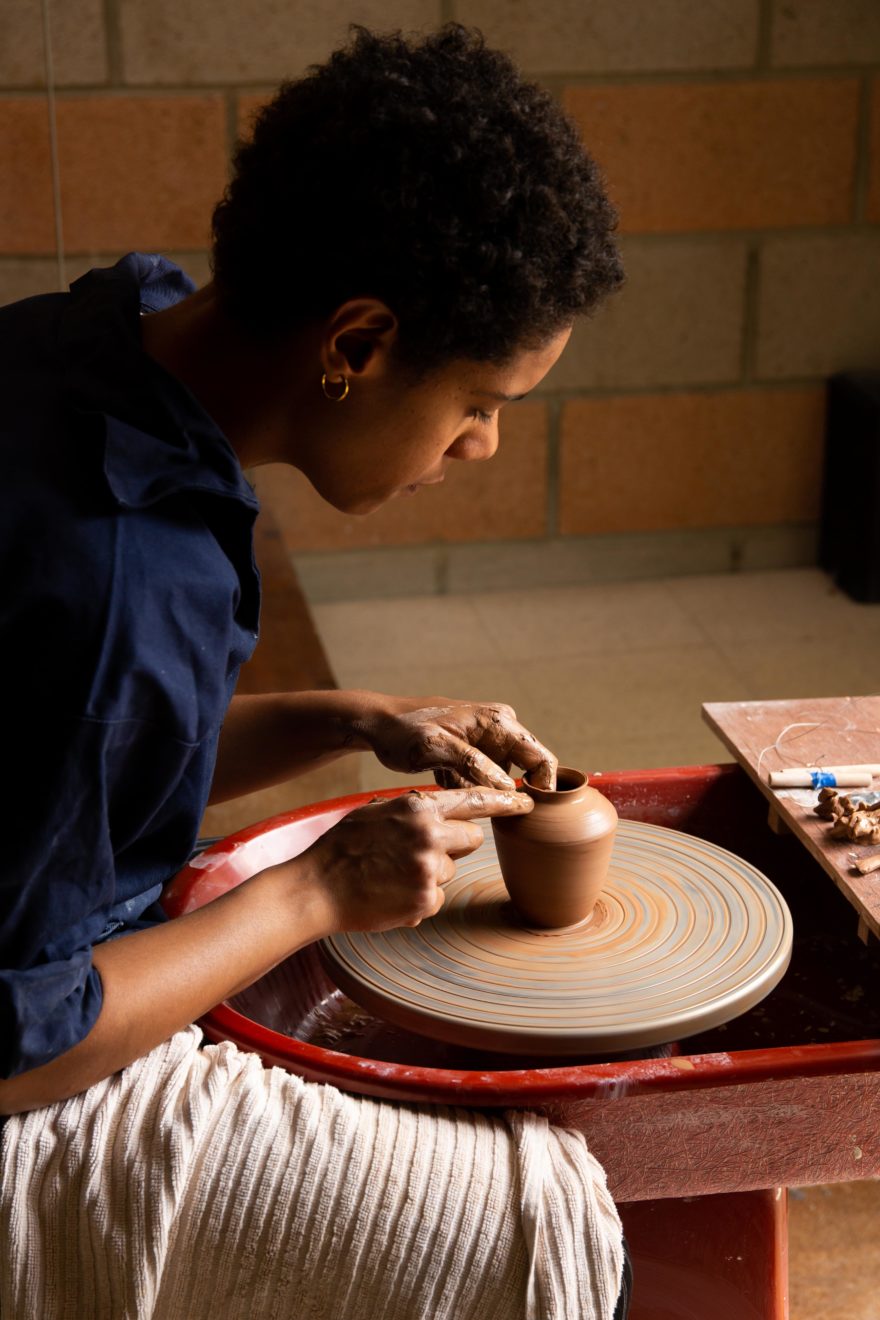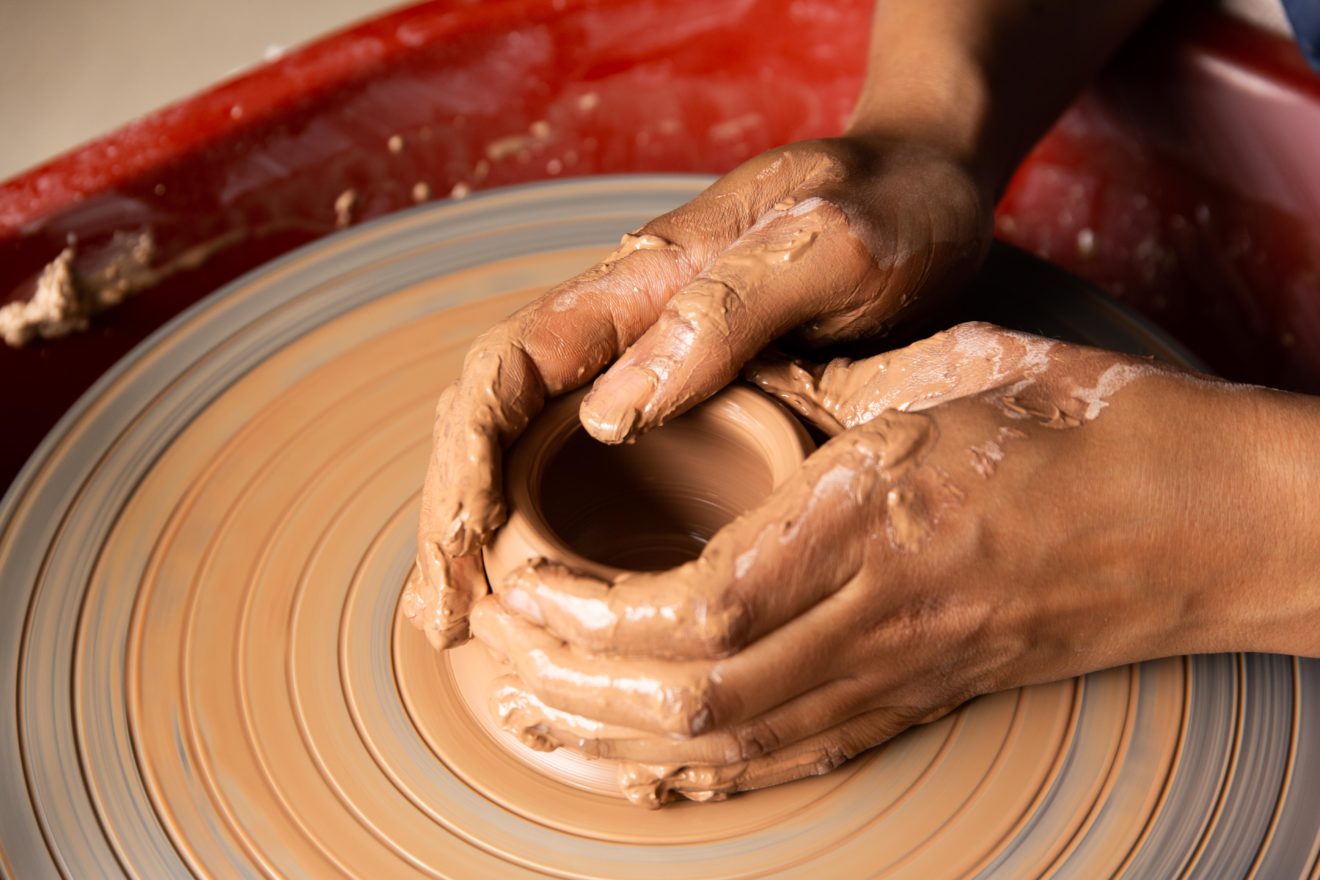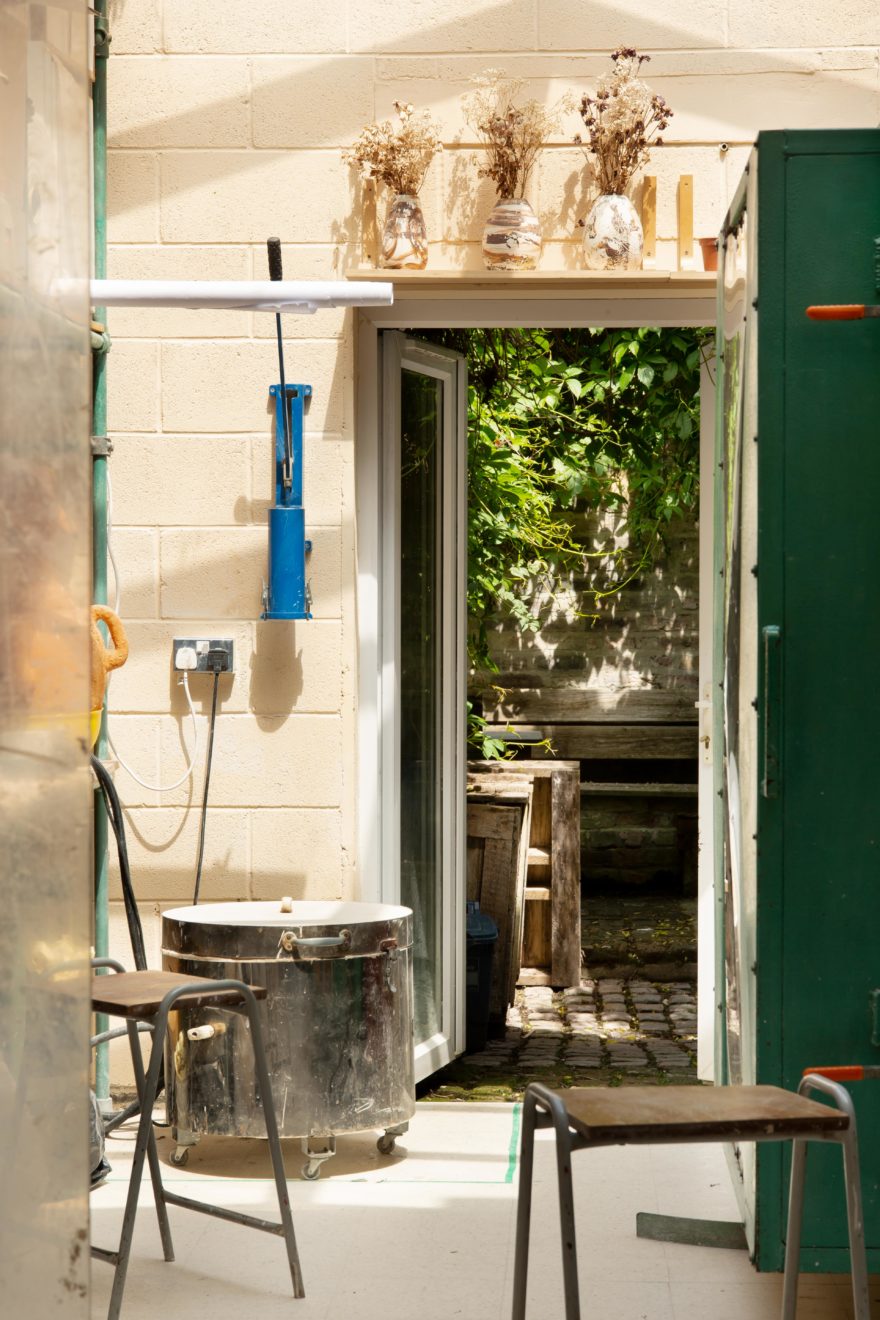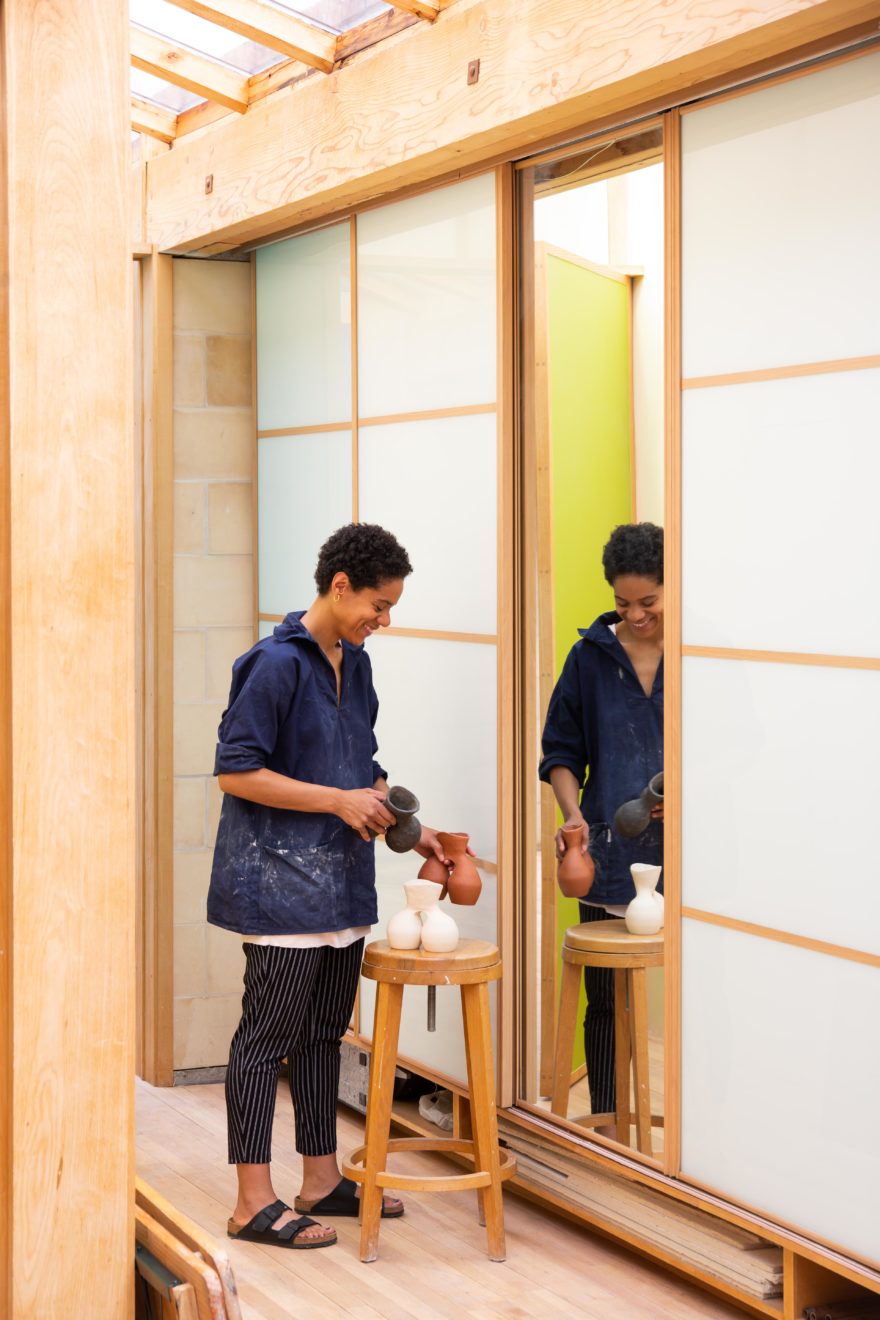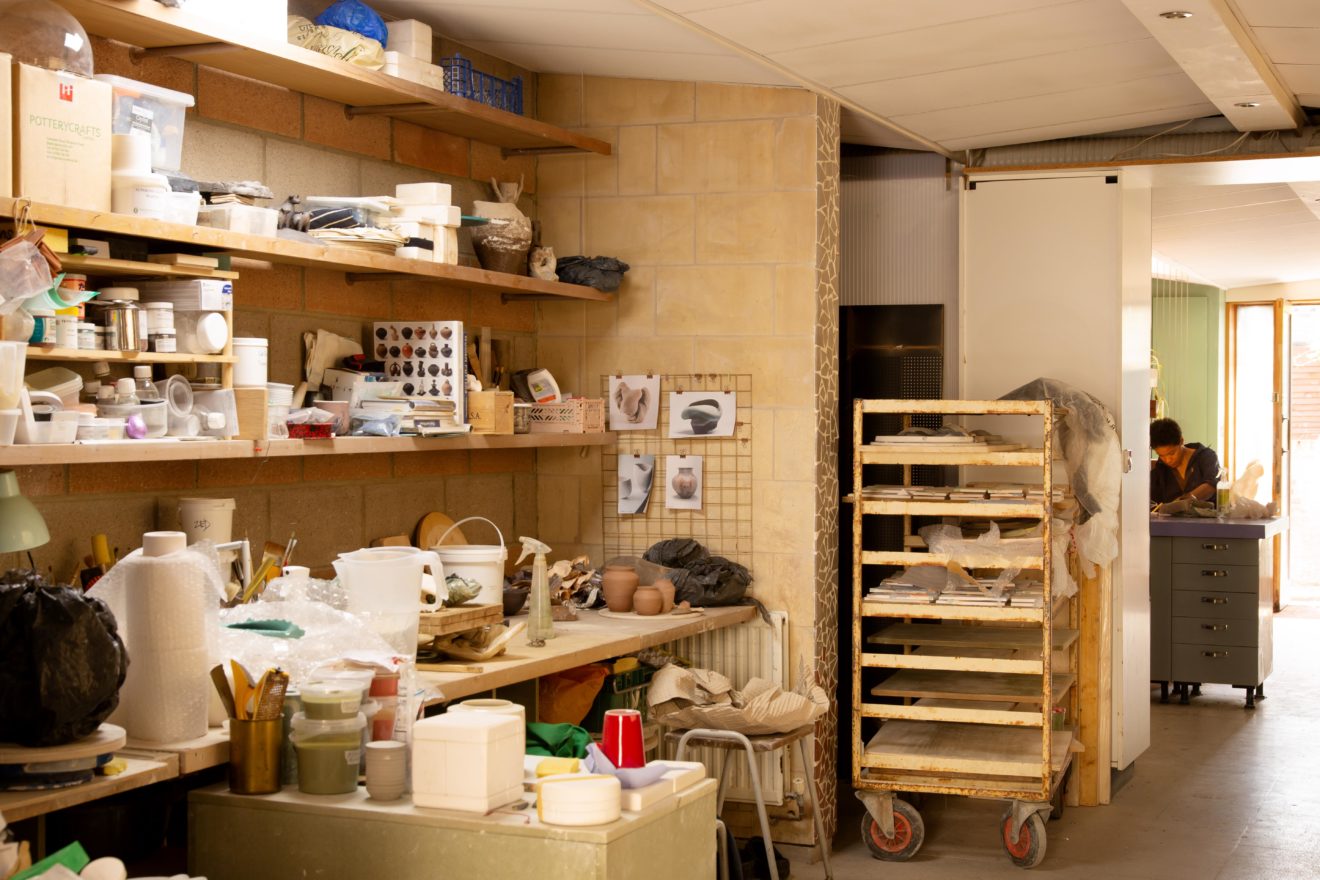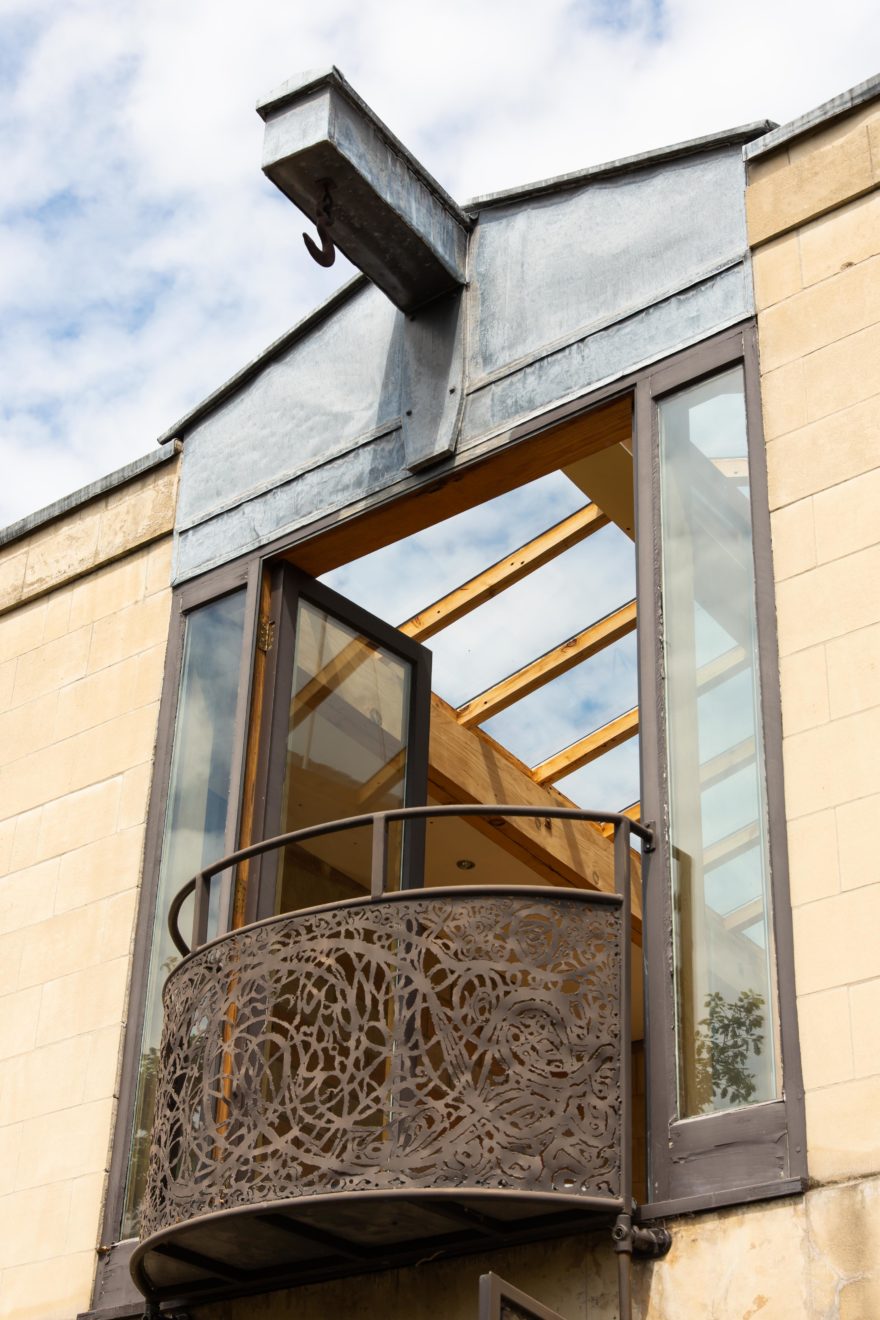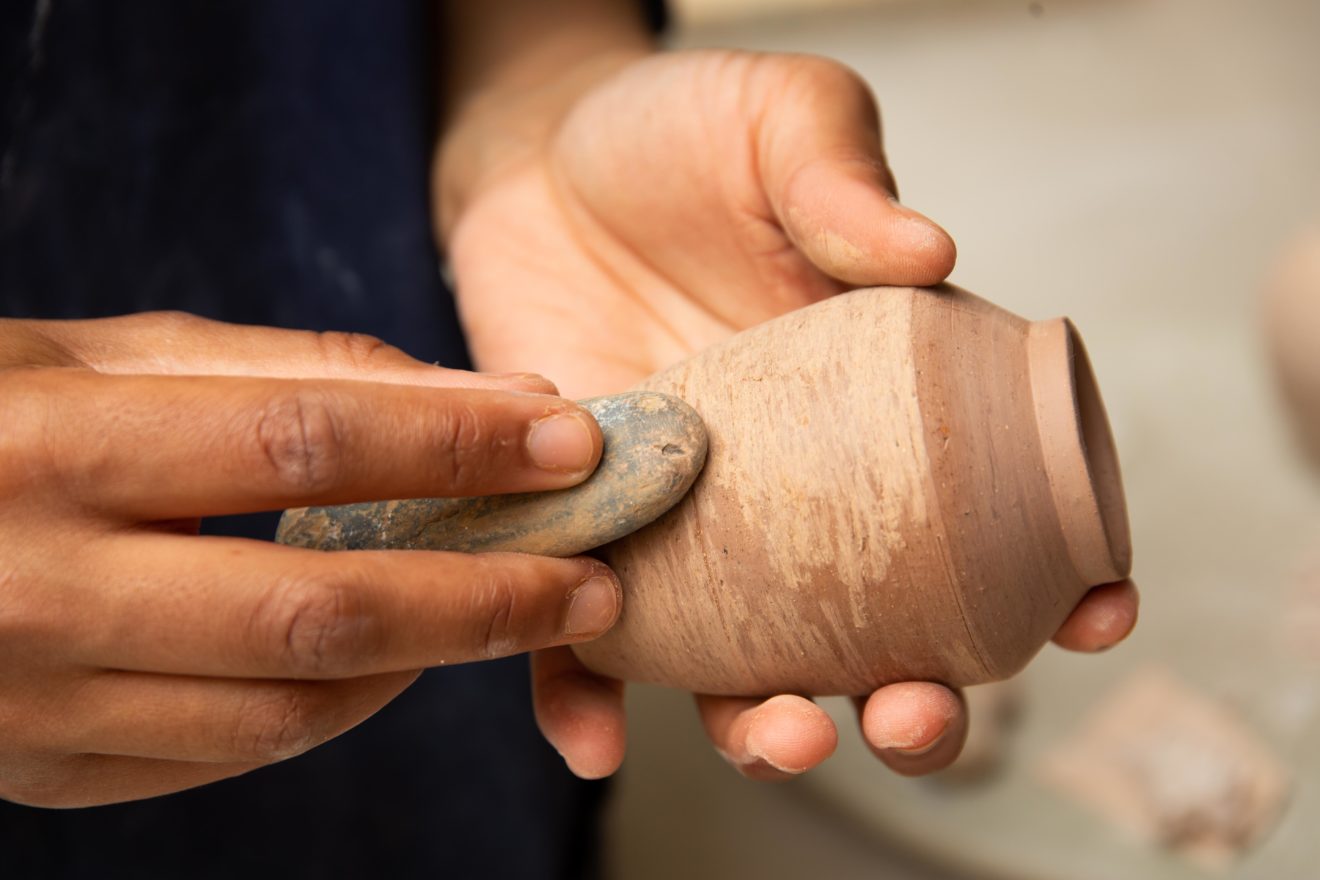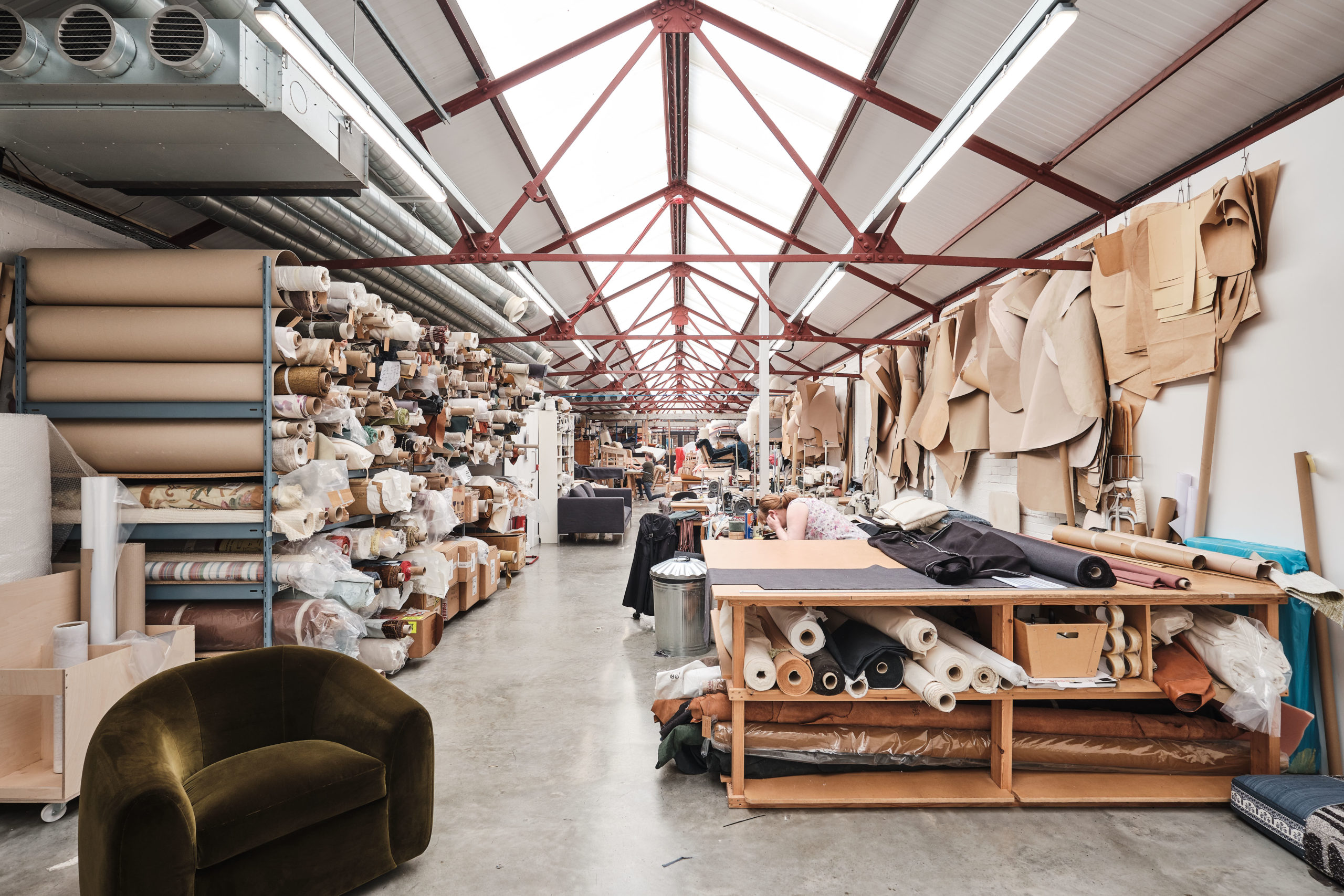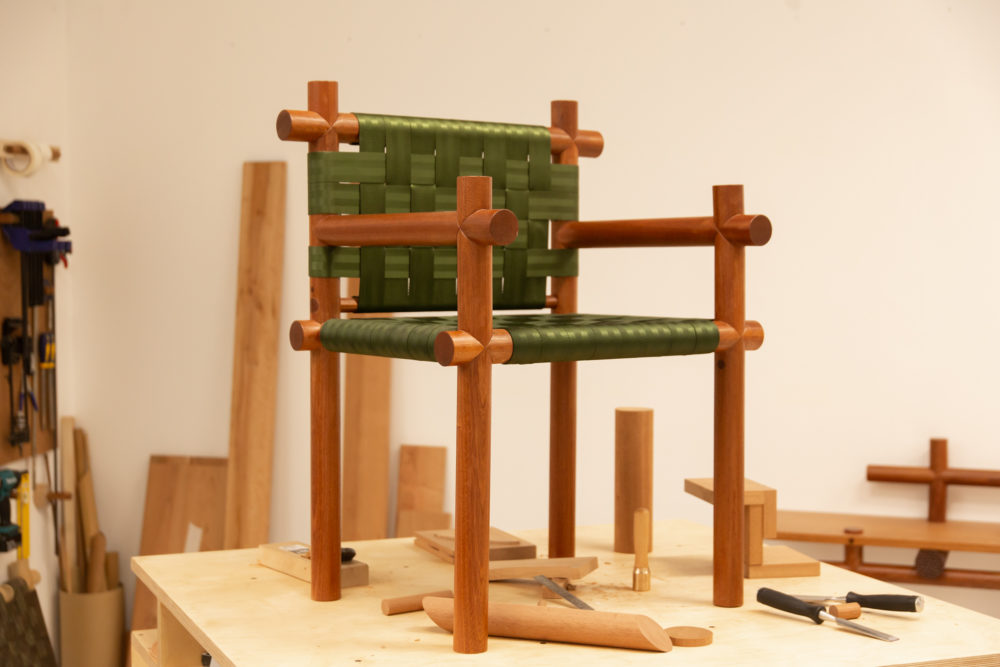Bisila Noha
London-based ceramicist Bisila Noha, creates wheel-thown pieces influenced by Japanese ceramics and her Spanish and Equatorial Guinean heritage; continuing a deep exploration of identity through her work. Often using simple shapes, Bisila allows her marbling decoration to be fully celebrated. We chat to Bisila about her creative process, inspirations and work as the Co-Director of arts and activism organisation, Lon-art Creative.
I moved to London because I wanted to be in a more creative place since I felt there was something in me I wanted to explore. When I got here, a friend recommended that I join her ceramics course and that was about eight years ago now.
What I love the most about it is the fact that clay is alive. It is another being. It took me a long time to understand that I needed to be synced with it; learn the drying times and how it changes in order to be able to work with it successfully.
Moreover, given that clay has been with humans forever, it is part of who we are and our shared history. Every time I have travelled to visit potters in other countries I have experienced this first-hand. It is beautiful and unique, as well as super powerful in these times of growing polarisation we are living in. I hope that with my practice I can somehow contribute to bringing people together.
Being a mixed-race woman I have always been very interested in mixing. For example, one of my very first projects was about mixing glazes to explore skin tones to match those of my siblings and parents.
I realised only last year that since my ’Spanishness’ has always been questioned, some of the projects I developed in my first year of making were some sort of attempt to prove my being Spanish. I was making shapes that are the epitome of Spanish pottery, botijos, or using needlework with clay – two practices that young people in Spain would consider out of fashion and simply not cool. In my head I thought, if this is what I’m making, no one could ever question that I’m Spanish.
And then at the beginning of 2020 I started thinking about my identity more deeply and using clay to explore it.
It’s kind of hard to answer this question. I am a thrower (making on the wheel) and ‘my thing’, if you like, is the decoration. So when it comes to making, I like to make simple shapes that will be a pure canvas for the decoration.
When it comes to the decoration, with marbling – the technique I use – I like to replicate the power and beauty of storms both in the sea and skies and to tell a story by combining pieces. Therefore I like to make pieces in groups – mostly in triptychs.
After many years of making a lot I now want to find more time to play and keep learning. I would like to keep exploring what else clay can offer me, so I’m going to do some courses on sculpture making and see what happens.
During my first years of making I was heavily influenced by a very capitalist approach to life: make, make, make, be productive, be efficient. I struggled to appreciate the value of decorative pieces – that of visual delight and aesthetic pleasure – and therefore, my first pieces had multiple functions. To me, those first pots were a metaphor for us human beings, becoming ‘human doers’. The Brumas series was born from a desire to take a step back and leave the doing behind to embrace the being.
It was a massive struggle to leave pots unglazed which meant that people wouldn’t be able to ‘use’ them. However, by doing so, and letting those pots ‘be’, I discovered a new path creatively.
My parents brought me clay from Equatorial Guinea years ago, which I used in my last project. It is very red and they just dug it from my late granddad’s land, so I assumed it was terracotta and that it would only fire to a certain temperature. When I started firing it I realised this wasn’t true and it might be because the island my dad is from, Bioko, is a volcanic island. I had very little clay so I couldn’t test much. However I did learn to not judge clay – or anything for that matter – by its surface.
I admire all the potters that I have shared studios with in the past five years – all amazing people who love what they do and would work extremely hard to make a living, whilst also knowing how to have fun. Their passion, easy-going natures and drive is admirable and very inspiring.
All the women artists I have had the chance to work with at Lon-art Creative, the arts and activism organisation I co-direct, have been an immense source of inspiration – as well as admiration. They are the bravest humans I know, willing to share their own very personal stories of violence through their art practices in order to empower other women.
Lon-art Creative is an arts and activism organisation that offers a platform for everyone to create, collaborate and reflect upon social issues through the arts. Sheroes is our flagship project which we launched in 2018 to highlight hidden herstories and since then we have organised five exhibitions – three physical and two online since the pandemic started.
I met Maria, the Founder, 11 years ago in Vienna when she was running workshops there and I was working at the Spanish Embassy. When I moved to London three years later, I started volunteering and since 2017 I’ve been co-directing it along with Maria. Lon-art has definitely been key in shaping my views and how I now approach my own ceramics practice. It is part of who I am now, as well as my family in London.
I want to do more research and build links internationally. I don’t have any particular names in mind, but I would love to connect with people from different corners of the world and do something together. Not necessary making, but thinking, chatting, sharing. I have started doing this lately and I just love it.
I believe that art’s mission is to move people and make people think. It can be extremely powerful for opening conversations and I now know that that is my goal as a maker. So whenever someone now sends me a message saying that my work and my story has resonated with them, that’s it for me!

